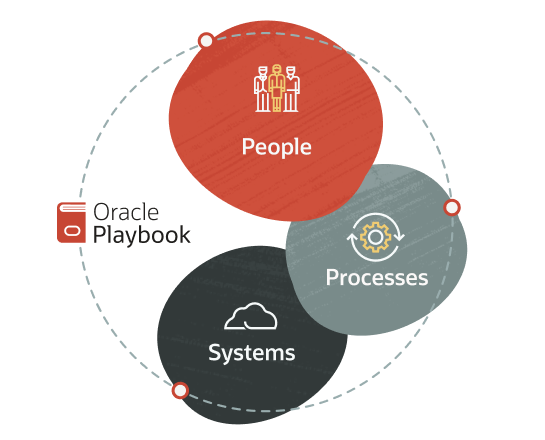The Oracle Playbook for IT Systems Excellence
As new technologies such as AI are increasingly woven through every facet of our lives, it’s no surprise that the role of IT is more critical than ever. Our IT team has become a catalyst of operational excellence and company growth, partnering with each line of business to simplify processes, automate our operations, and delight those we serve.
We’ve captured the secrets to our success in the Oracle Playbook for IT Systems Excellence so you can realize similar benefits, including closing dozens of data centers, deprecating thousands of applications, and saving hundreds of millions of dollars.


Enhance efficiency and performance while reducing costs
The Oracle Playbook for IT Systems Excellence describes our framework for focusing on people, processes, and systems to achieve great outcomes. Learn how we:
- Standardized best-in-class processes across our operations
- Moved our IT systems to Oracle Cloud Applications, Infrastructure, and Database
- Easily built new cloud native applications
- Increased the productivity of teams across our organization
Achieving IT systems excellence
By transforming our IT systems and moving to the cloud, we’ve eliminated complexity, costs, time, and other obstacles that would otherwise limit our agility and ability to deliver great experiences to those we serve. Here are some specific results:
5,000+
applications deprecated
$100M+
in cost savings
80%
reduction in the time IT spends on administrative activities
50%
reduction in compute resources needed to run applications
~50
data centers closed
1/3
reduction in IT resources
“Our move to Oracle Cloud Applications and Infrastructure has enabled us to automate our critical business services and achieve greater efficiencies across our operations. This has saved our IT team many hours running and maintaining our systems, so they have more time to focus on helping us improve and innovate for our users.”
How can we help you be successful? Speak to an Oracle subject matter expert.